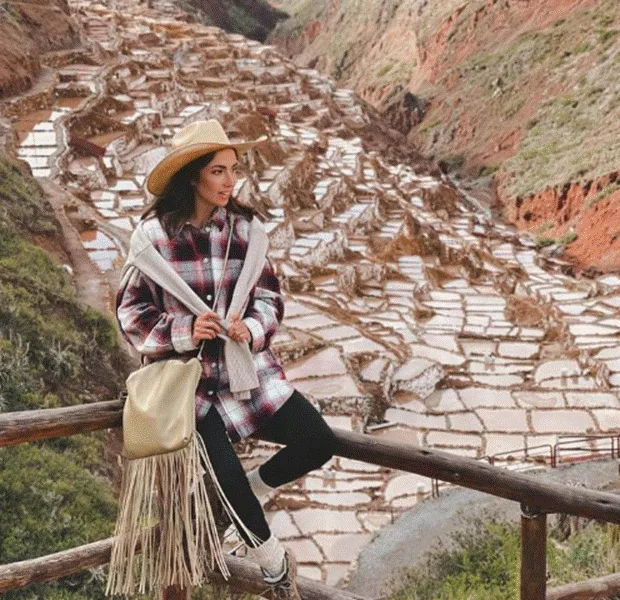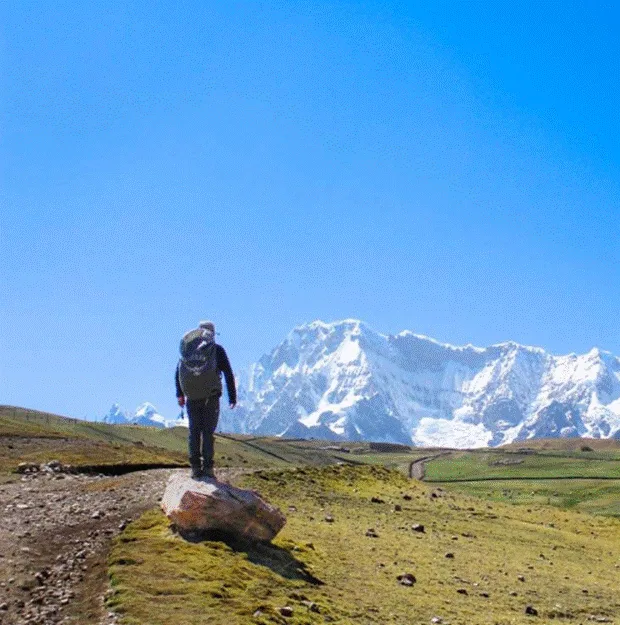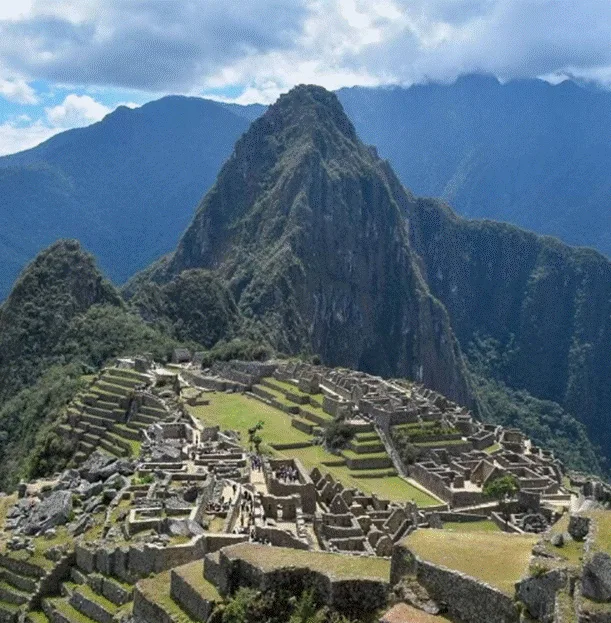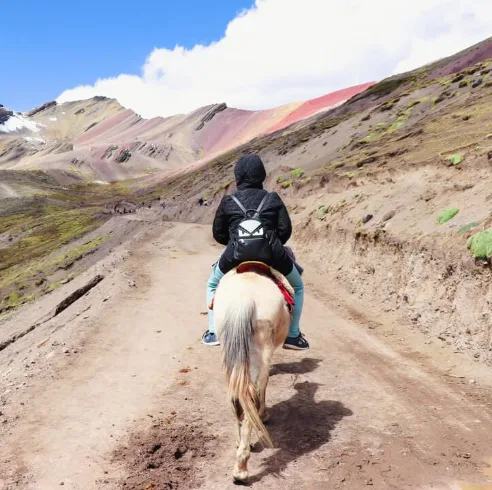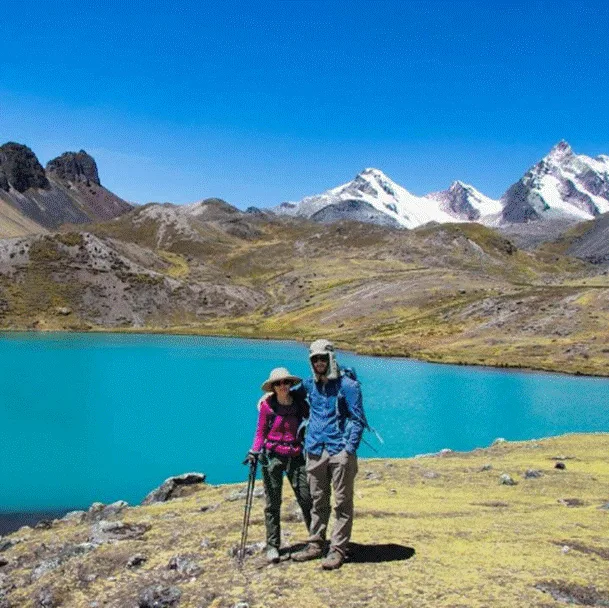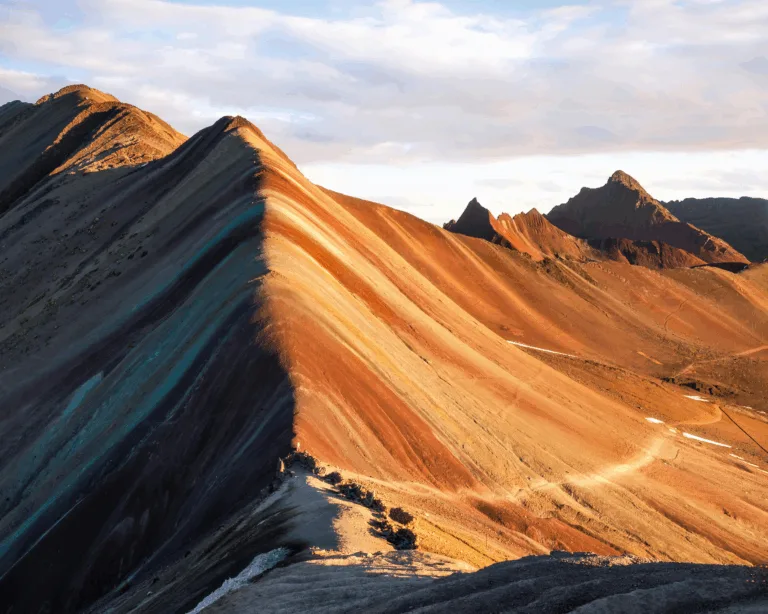Machu Picchu vs Choquequirao: The Ultimate Guide for Inca Trekking Adventures
When planning a trip to Peru, the decision between visiting Choquequirao or Machu Picchu can be a tough one. Both are extraordinary Inca archaeological sites, nestled in the breathtaking Andean mountains, but they offer entirely different experiences. Here’s a comprehensive guide to help you choose which site best suits your travel preferences.
Machu Picchu: The Iconic Inca Wonder
Machu Picchu is undoubtedly the most famous Inca site in the world and a UNESCO World Heritage site. Known as the “Lost City of the Incas,” it’s one of the New Seven Wonders of the World and attracts millions of visitors annually. The site is renowned for its stunning architecture, incredible views, and rich history.

Why You Should Visit Machu Picchu
1. Accessibility
Easy Access: Unlike Choquequirao, Machu Picchu is easily accessible. You can reach the site by train from Cusco to Aguas Calientes, followed by a short bus ride to the entrance. If you’re feeling adventurous, you can hike the famous Inca Trail (permits required months in advance).
2. Stunning Views and Historical Significance
- Panoramic Views: Machu Picchu offers incredible panoramic views of the Andes mountains and the Urubamba River. The sight of these stone ruins perched on a mountain saddle is awe-inspiring.
- Inca Architecture: The site showcases extraordinary Inca craftsmanship, with meticulously carved stone temples, terraces, and plazas.
- Wildlife and Flora: Llamas roam freely across the site, and if you’re lucky, you might spot various bird species like Andean condors.
3. Tourist-Friendly
- Cultural Experience: With many experienced guides offering tours, you can delve deep into the history of the site and the Inca civilization.
- Comfort: You’ll find comfortable accommodations, restaurants, and shops in the nearby town of Aguas Calientes.
4. Extra Hikes
Hike up to Huayna Picchu or Machu Picchu Mountain for a different perspective and even more incredible views.
Best Time to Visit
The dry season, spanning from April to October, offers the most favorable conditions for exploring Machu Picchu. Be mindful of the crowds, especially in peak months like June through August, so booking tickets in advance is a must.
Choquequirao: The Hidden Gem of the Andes
Often referred to as “Machu Picchu’s twin site”, Choquequirao is a more secluded and lesser-known Inca site. Although it offers many similarities to Machu Picchu in terms of architecture and Inca terraces, Choquequirao sees far fewer visitors, making it an ideal spot for those seeking peace and solitude.

Why You Should Visit Choquequirao
1.Adventure and Solitude
Off-the-Beaten-Path: Choquequirao is much more remote and less touristy than Machu Picchu. It’s perfect for travelers who want to escape the crowds and experience an untouched archaeological site in its natural setting.
Challenging Trek: Reaching Choquequirao requires a multi-day trek starting from Capulichayoc, head trail about 4-5 hours by car from Cusco. The trek is challenging, with steep descents and ascents, but it rewards adventurers with stunning views and a real sense of discovery.

2.Untouched Beauty
- Spectacular Views: Located at a higher elevation (3,050 meters, or 10,010 feet), Choquequirao offers expansive views of the Apurimac River Canyon and the distant glacier peaks of the Andes.
- Inca Ruins: Like Machu Picchu, Choquequirao has impressive terraces, altars, temples, usnus or ceremonial and ritual platform, and structures that reflect Inca engineering. The site is large, and due to fewer tourists, you’ll have more time to explore without feeling rushed.
3.Unique Features

- Llama Depictions: One of the most unique features of Choquequirao is the white stone depictions of llamas on the terraces—24 llamas in total, which is quite a sight for visitors.
- Local Interaction: The trek to Choquequirao takes you through small Andean villages where you can meet locals, experience their culture, and learn about rural life in the Andes.
Best Time to Visit
Dry Season (April to October) is also the best time to visit Choquequirao to avoid treacherous muddy trails and ensure a smoother hike. Given its remote location, it’s crucial to be well-prepared for a multi-day trek.
Comparison: Machu Picchu vs. Choquequirao
| Feature | Machu Picchu | Choquequirao |
| Accessibility | Easy access via train & bus | Requires a multi-day trek |
| Crowds | High, especially in peak months (3000 to 4000 Visitors each day) | Very few tourists, offers solitude (50 to 100 vistors every day) |
| Site Size | Quite big, Spanning 37,302 hectares | Larger, Spanning 522,878.30 hectares |
| Fitness Level | Level Low to moderate (easy access) | High (challenging trek) |
| Views | Panoramic views of the Andes | Expansive views of the Apurimac River Canyon |
| Historical Significance | Famous, iconic Inca site | Less known but equally impressive |
| Additional Hike | Hike Huayna Picchu, Machu Picchu Mountain | Trekking through the Vilcabamba Range |
Weather Patterns at Choquequirao and Machu Picchu: Trekking in the Andes
Two iconic Incan archaeological sites located in the Peruvian Andes, it’s important to consider several factors that influence their climates, such as altitude, season, and proximity to each other. Both sites attract visitors year-round, but each has distinct weather patterns due to its elevation and geography.
1. Location & Altitude
Machu Picchu is situated at around 2,430 meters (7,970 feet) above sea level, making it slightly lower than Choquequirao.
Choquequirao, on the other hand, is higher in altitude at approximately 3,050 meters (10,010 feet). This difference in elevation results in cooler temperatures at Choquequirao.
2. Weather & Climate
Machu Picchu:
- Tropical mountain climate: The weather is typically mild, with daytime temperatures ranging from 18°C to 24°C (64°F to 75°F).
- Evenings can be cooler, dropping to 10°C to 12°C (50°F to 54°F).
- Rainy season: The wettest months are from November to March, with January and February being particularly rainy, though the site remains open year-round.
- Dry season: April to October sees clearer skies, with fewer chances of rain, making it ideal for visitors.
Choquequirao:
- Due to its higher altitude, Choquequirao tends to be cooler, especially at night and hotter at the lowest elevations.
- Daytime temperatures can range from 16°C to 22°C (61°F to 72°F), which is slightly cooler than Machu Picchu.
- Nighttime temperatures drop to 5°C to 8°C (41°F to 46°F), so it can feel quite chilly, especially during the dry season.
- Dry season: From April to October, weather conditions are drier and more favorable for trekking, but expect the cooler temperatures.
Cusco to Machu Picchu vs Choquequirao: Distances, Routes, and Travel Options
It is important when deciding which destination to visit and how much time you’ll need for travel.
Machu Picchu
Distance & Travel Time
Distance from Cusco to Machu Picchu
- Cusco to Aguas Calientes (the town closest to Machu Picchu) is about 111 km (68 miles) by train.
- Aguas Calientes to Machu Picchu (the archaeological site) is approximately 9 km by bus or on foot.
- So, the total distance from Cusco to Machu Picchu is around 120 km (74 miles).
Train Journey
Duration: The train ride from Ollantaytambo to Aguas Calientes usually takes about 2 hours.
Train Services: There are different train services available:
- Expedition: Basic service.
- Vistadome: Offers panoramic views.
- Hiram Bingham: Luxury service with meals and entertainment.
After reaching Aguas Calientes, a 20-30-minute bus ride takes you up to Machu Picchu.
Alternative: Hiking the Inca Trail
If you’re up for an adventure, you can hike the Inca Trail from Km 82 (on the Cusco-Ollantaytambo route). This is a 4-day trek, covering about 45 km (26 miles), and it leads directly to Machu Picchu.
Choquequirao
You’ll first need to travel to Capulichayoc, the trailhead town. Here’s a clear breakdown:
1. Distance & Travel by Car
- Distance: The distance from Cusco to Capulichayoc is about 176 kilometers (109 miles) by road from Capulichayoc (trail head to Choquequirao Inca Site is 20 km make it total distance from Cusco to Choquequirao 196km
- Travel Time by Car: It takes around 4 to 5 hours by car to reach Capulichayoc, depending on road conditions.
2. Trekking to Choquequirao
- Distance of the Trek: The actual trek from Capulichayoc to Choquequirao and back is about 40 kilometers (25 miles) round-trip hiking.
- Trekking Duration: The trek typically takes 4 to 5 days to complete (round trip). It involves steep ascents and descents, with many switchbacks, making it physically demanding.
- Difficulty: This trek is challenging due to the rugged terrain and significant elevation changes, making it suitable for experienced trekkers in good physical condition.
3. Getting to the Trekking Trailhead from Cusco
Step 1: First, take a vehicle from Cusco to Capulichayoc (about 4-5 hours).
Step 2: From Capulichayoc, begin the 4-5-day trek through mountainous terrain to reach Choquequirao. Be prepared for steep hikes and varying weather conditions along the way.
Elevation Changes on the Trek from Capulichayoc to Choquequirao
The trek to Choquequirao involves significant changes in elevation, offering both a challenging descent and a rewarding ascent. Here’s a breakdown of the key elevation points:
1. Trailhead (Capulichayoc)
Altitude: 2,900 meters (9,514 feet): This is where your trek begins. Starting from Capulichayoc, you’ll begin your journey toward Choquequirao.
2. Lowest Point on the Trail (Playa Rosalina)
Altitude: 1,450 meters (4,758 feet): During the trek, you’ll descend to the lowest point, Playa Rosalina, located in a valley before the challenging ascent toward Choquequirao. This marks a 1,450-meter (4,758 feet) drop from the trailhead.
3. Highest Point (Choquequirao)
Altitude: 3,050 meters (10,000 feet), your final destination, Choquequirao, sits at an elevation of 3,050 meters (10,000 feet), slightly higher than the starting point at Capulichayoc. This is the highest point of the trek.

4. Elevation Gain and Loss
- Descent: From 2,900 meters at Capulichayoc, you’ll descend to 1,450 meters at Playa Rosalina. This represents a 1,450-meter (4,758 feet) elevation loss.
- Ascent: from Playa Rosalina, you’ll climb up to Choquequirao at 3,050 meters, an elevation gains of 1,600 meters (5,249 feet).
- Total Elevation Gain and Loss (Round Trip) 6,100 meters (20,013 feet): Over the course of the 4-day trek, you’ll experience a total elevation gain and loss of 6,100 meters (or 20,013 feet) as you ascend and descend the rugged terrain.
Exploring the Size of Machu Picchu and Choquequirao: Which Is Larger?
Machu Picchu
The Historic Sanctuary – National Archaeological Park of Machu Picchu (SHM-PANM) is a UNESCO World Heritage Site and one of the most iconic and culturally significant locations in Peru. Spanning 37,302 hectares, this protected area is not only home to the world-renowned Machu Picchu Citadel but also a diverse range of flora and fauna. It is considered one of Peru’s most biodiverse regions, with over 60 archaeological monuments, all connected by the Qhapaq Ñan—the vast network of Inca trails. The sanctuary preserves both Inca heritage and the natural ecosystems of the region, making it a key destination for history and nature lovers alike.
- Size: 37,302 hectares
- Key Features: Machu Picchu Citadel, Inca trails (Qhapaq Ñan), biodiversity, 60+ archaeological monuments
Choquequirao
The Choquequirao Regional Conservation Area (ACR Choquequirao) is a vast protected area located in the Vilcabamba mountain range in Cusco, spanning 103,814.39 hectares. It is home to the Choquequirao Archaeological Park, an ancient Inca city often referred to as the “sister city of Machu Picchu.” The park is a remote treasure, and the surrounding region is one of the most biologically rich areas in the country. However, the entire Choquequirao Conservation Area extends across an even larger 522,878.30 hectares, making it one of the largest and most significant natural and cultural sites in Peru.
- Size of Archaeological Area: 103,814.39 hectares
- Total Conservation Area: 522,878.30 hectares
- Key Features: Choquequirao Archaeological Park, Vilcabamba mountain range, biodiversity, remote trekking routes
Which Is Larger?
When comparing the size of both sites, Choquequirao stands out with a much larger protected area. While Machu Picchu spans 37,302 hectares, Choquequirao covers 103,814.39 hectares for the archaeological park alone, and a vast 522,878.30 hectares when considering the full conservation area.
However, Machu Picchu remains the more famous and visited site due to its accessibility and iconic status as one of the Seven New Wonders of the World.
Conclusion: Which Inca Site Should You Visit?
Choose Machu Picchu if: You prefer an iconic, easily accessible destination with rich history, stunning views, and ample opportunities for exploration and cultural experiences. Ideal for those short on time or those looking for convenience.
Choose Choquequirao if: You’re an adventure seeker and enjoy hiking off-the-beaten-path to discover an untouched Inca site in a serene, remote environment. Perfect for those looking for solitude and a more immersive experience in the Andes.
Related post
- The Ultimate Guide to Machu Picchu’s Best Treks
- On the Way to Machu Picchu: The Lares Trek vs. The Inca Trail
- How To Pack For An Overnight Trekking Trip
- How to Prepare for High-Altitude Trekking in Peru
- The Inca Royal Road: What You Didn’t Know About the Qhapaq Ñan


